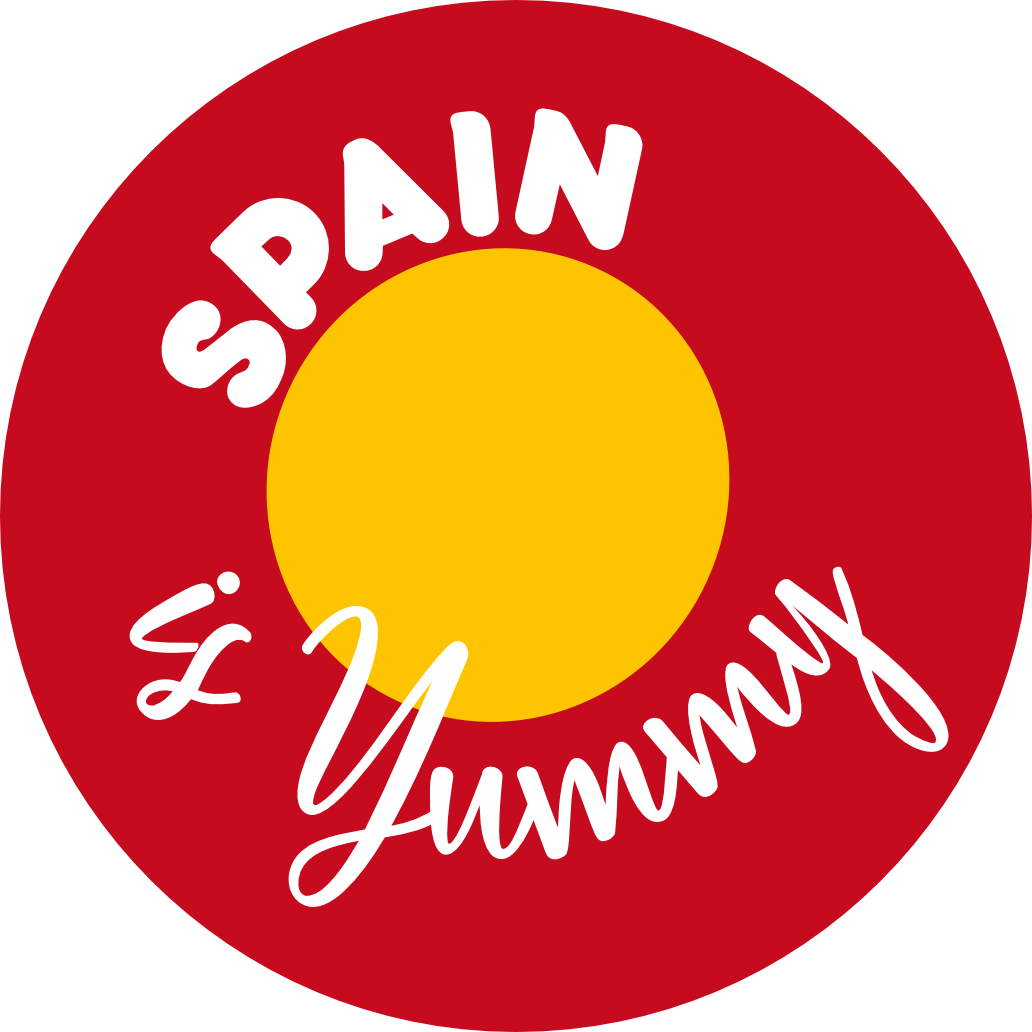About 1080 Recipes
If there is one single book that transformed the cooking of a whole generation in Spain, then it is Simone Ortega´s “1080 recipes”. If you want to take a peek at most Spanish household home cooking beginnings since the 70s, then this book is your window. It was definitely the first cookbook I bought upon my arrival in Spain, more than 20 years ago. Now in our family, we have two Spanish editions of the same book 1080 Recetas de cocina.


Why 1080 recipes?
“ 1080 recipes” by Simone Ortega is so straightforward, so simple, and so focused on home cooking that it was a hit from the beginning. More than 3,5 million copies in over 60 editions were sold in the Spanish version of the book. It is the third most-sold book in Spain, preceded only by the Bible and “El Quijote”. So, it could be considered the most popular Spanish cooking book of all times.
What to expect and what not to expect from 1080 recipes?
Not all the recipes in this book are traditional Spanish dishes, in fact I would say that most of them are not strictly traditional, in the sense, that they are express, simplified versions of dishes a beginner cook could prepare at home. 1080 Recipes would have been the “top cooking hacks”,” 5 minute easy recipes”, or “easy cooking” popular youtube channel of the day, just that at the time, no internet was there to save beginner cooks in their kitchen adventures. They had their 1080 recipes to start cooking and aspire to impress.
In a prologue of one of the editions Simone Ortega writes that her intention is to give young people with almost no notions of cooking a guide that would not daunt them with complexities, so that they plunge into cooking their own food without hesitation. Canned foods are used in some recipes, tuna, sardines, peas, fruits and more. My mother in law would be horrified if someone told her to use canned peas in her paella. I would dare say that she never in her life used canned veggies apart from some pimientos del piquillo.
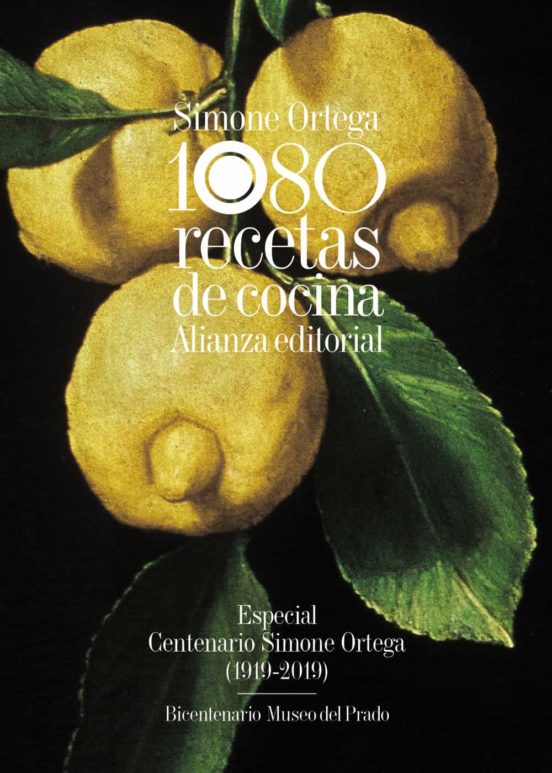

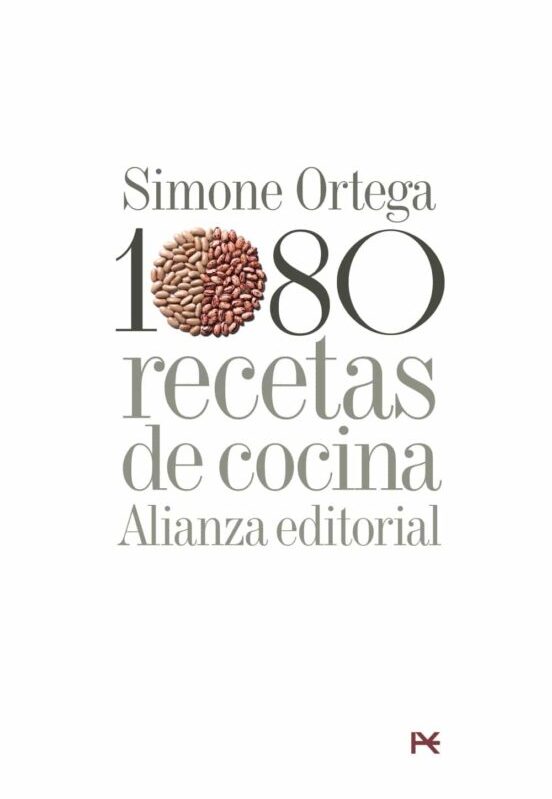

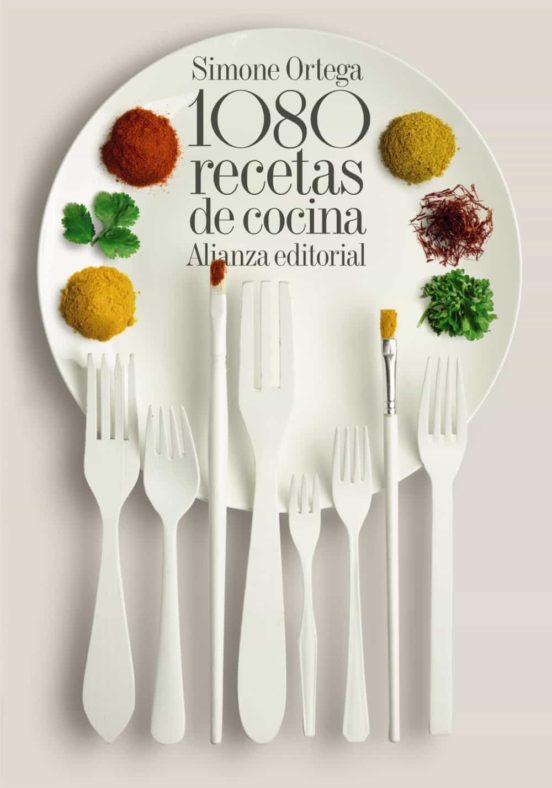

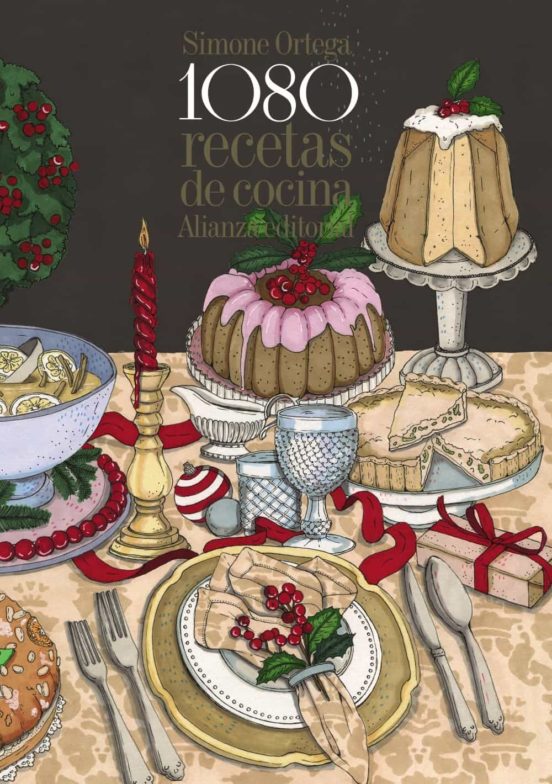

Covers of different Spanish editions of 1080 Recetas.
The content of 1080 Recipes
Recipes, recipes, and more recipes.
Simone Ortega was born in Barcelona to a French family, which had an influence on her choice of recipes. Including the French references, 1080 recipes contains what at the time it was published would have been called continental cooking. The recipes range from extremely simple (frying an egg) to a bit more elaborate ( stuffed quails).
The recipes are distributed in sections that are well indexed in the latest editions; appetizers, cold dishes and salads, savory pies, deep fried foods, sauces, stews, soups, creams and purees, rice, potatoes, pasta, legumes, vegetables, mushrooms, eggs, soufflés, puddings ( savoury), fish and seafood, meat, lamb, poultry, game, offal, and desserts.
In the English edition by Phaidon, as well as its simple, easy-to-follow recipes, there are also menu plans, cooking tips, and a glossary. The book is fully illustrated throughout with specially commissioned photographs and over 500 illustrations by the famous Spanish graphic designer and illustrator, Javier Mariscal. This bestselling classic is a friendly and approachable book for all emancipating beginner cooks, and for those who look for nostalgic comforting.
Despite the fact that the first edition was printed in 1972 ( 50 years ago) the editorial has updated the latest versions so that the book doesn’t feel outdated and maintain its status as a reference in home cooking for emancipating youth.
In the two Spanish editions I have, the recipes are numbered from 1 to 1131, the reason that the final number is not 1080 might be that some of the recipe references are extremely simple or generic food preparations. As an example, you can find: How to prepare and cook white asparagus, or, How to prepare grilled steaks. The first recipe in the Spanish edition is Shortcrust pastry and the last one Fig compote with red wine and spices.
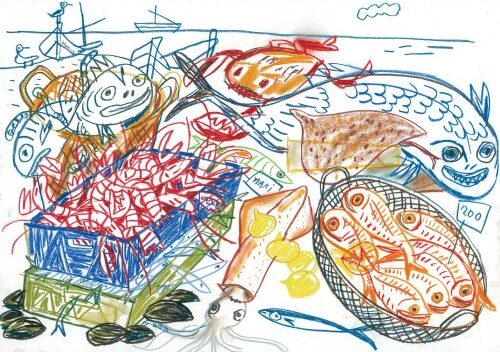

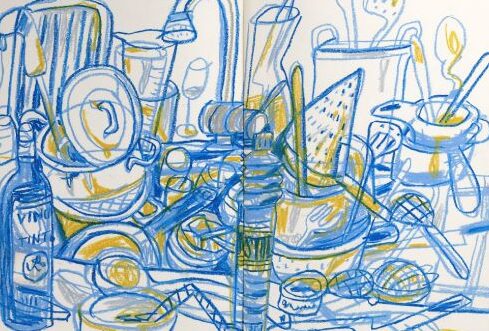

Illustrations by Javier Mariscal from 1080 Recipes book
About the author: Simone Ortega
(1919/05/29 – 2008/07/02)
Simone Ortegais a writer and gastronome. Simone Klein Ansaldywas born on May 29, 1919 in Barcelona to a family of French origin. At the age of nine she moved with her family to Madrid, where she studied high school at the Lycée Français.After working as a nurse and childcare worker in a boarding house, she remarried at the age of 30 José Ortega Spottorno, honorary president of the newspaper El País.
Simone Ortega became interested in cooking at an early age. Her grandmother was an extraordinary cook, which awakened her interest in cooking.
Ortega also gave numerous conferences during her lifetime and was a contributor to the gastronomic pages of the newspaper El País. Other works of hers were “Nuevas recetas de cocina” (New cooking recipes) or “Las mejores recetas de Simone Ortega” (Simone Ortega’s best recipes).
She was a member of the Cofradía Española de la Buena Mesa. In 1987 she received the Special Gastronomy Prize awarded jointly by the Spanish Academy of Gastronomy, and the Cofradía de la Buena Mesa. In 2003 she was named Knight of Arts and Letters of the French Republic for her contribution to the dissemination of French gastronomy in Spain, and in 2007 she received the Food of Spain Award.
Curiosities
1080 photos or less!
For years the Spanish editions of 1080 recipes have survived without any food photography, so around 2011 two Spanish food bloggers Sandra and Pamela started a project calles 1080 fotos de cocina, with the purpose of photographing each and every recipe of the book. Unfortunately the work was never completed, but the facebook page where the first photos were publishes is still there to remind us of what was already achieved.


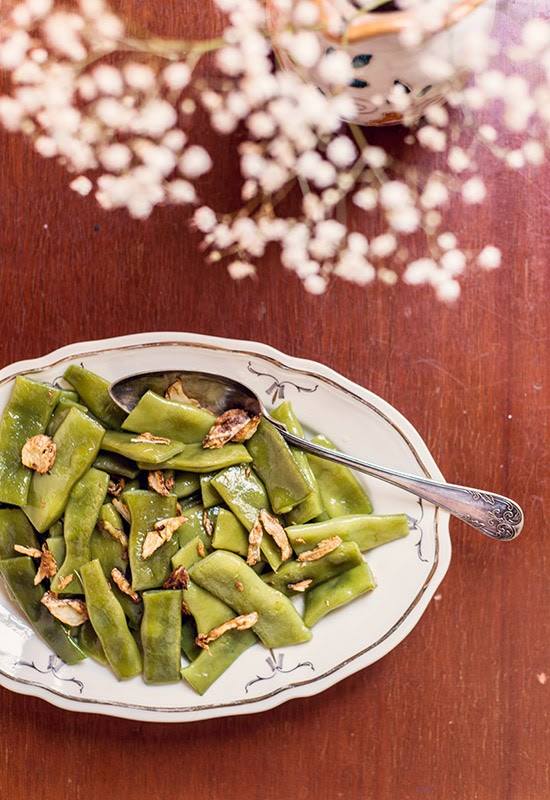



Three of the last photographs published on the facebook page, “1080 fotos de cocina”.
Simone Ortega, a culinary school
A tourism and culinary school in Móstoles Madrid holds the name of Simone Ortega to honor her work and contribution. Sweet, is the name of the restaurant of CIFP Escuela de Hostelería y Turismo Simone Ortega, where you can dine and enjoy the culinary creations of its students. And no, they do not cook the 1080 recipes in the book.
